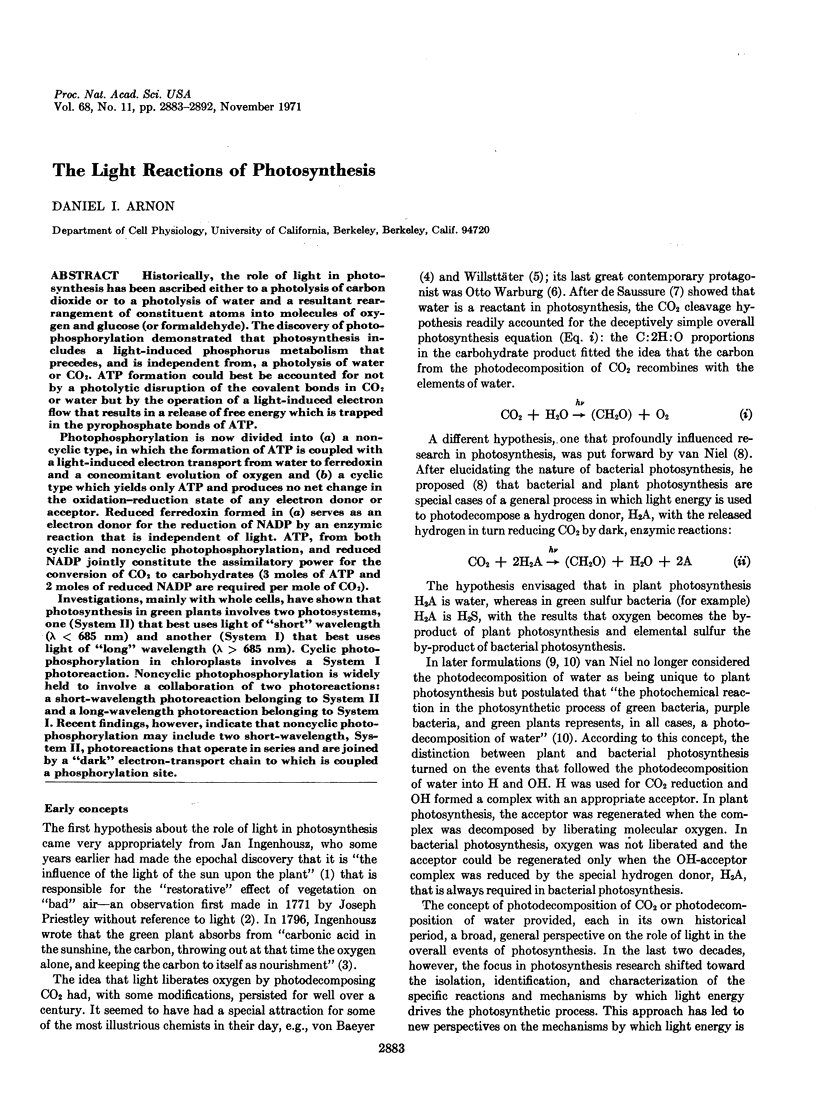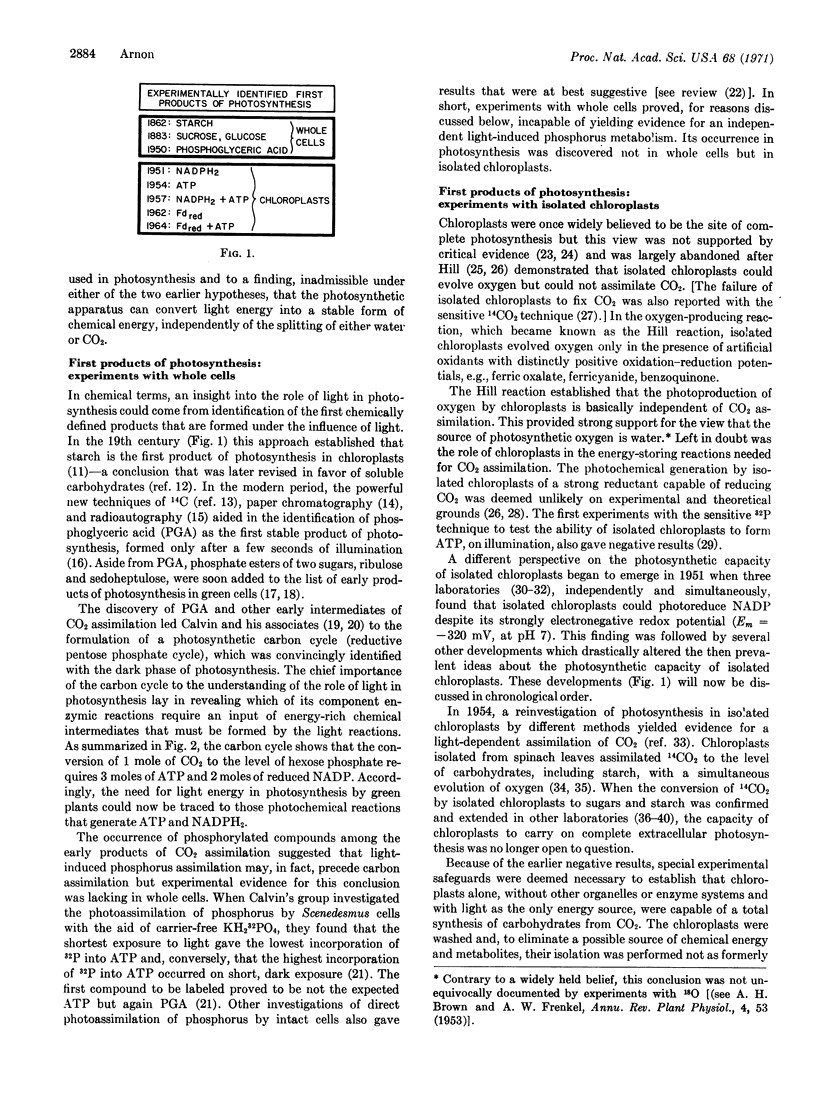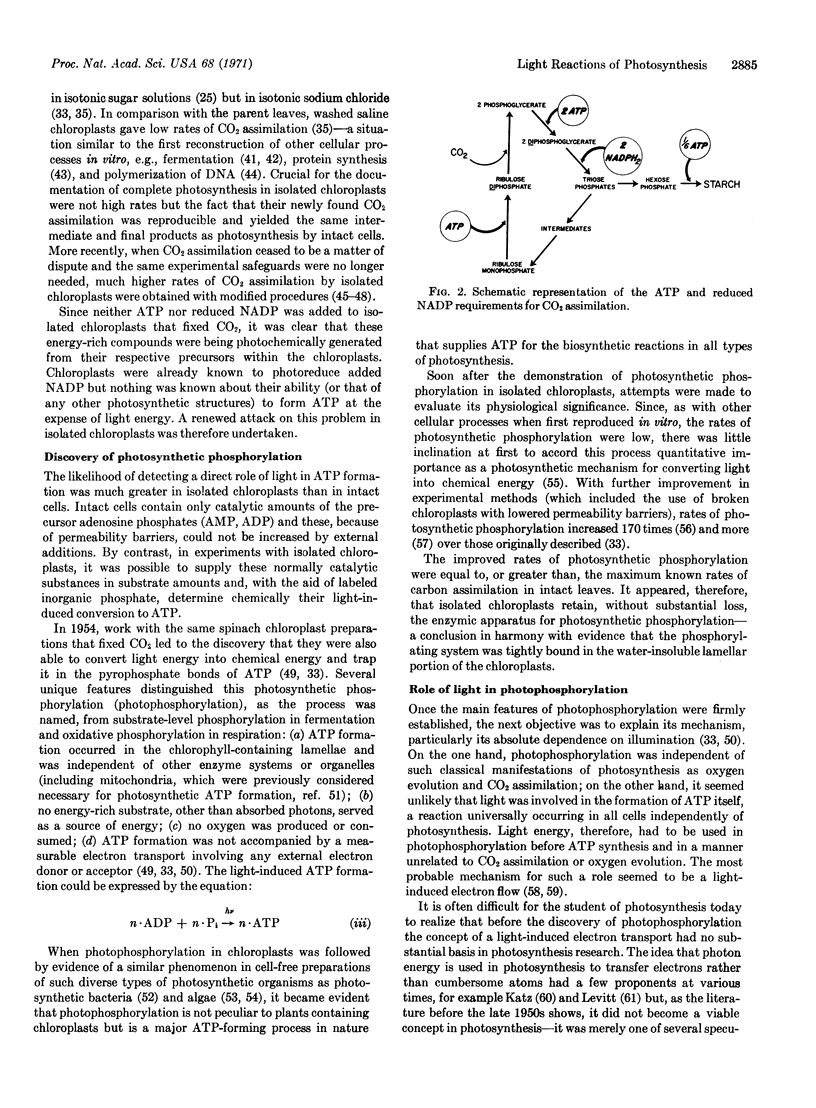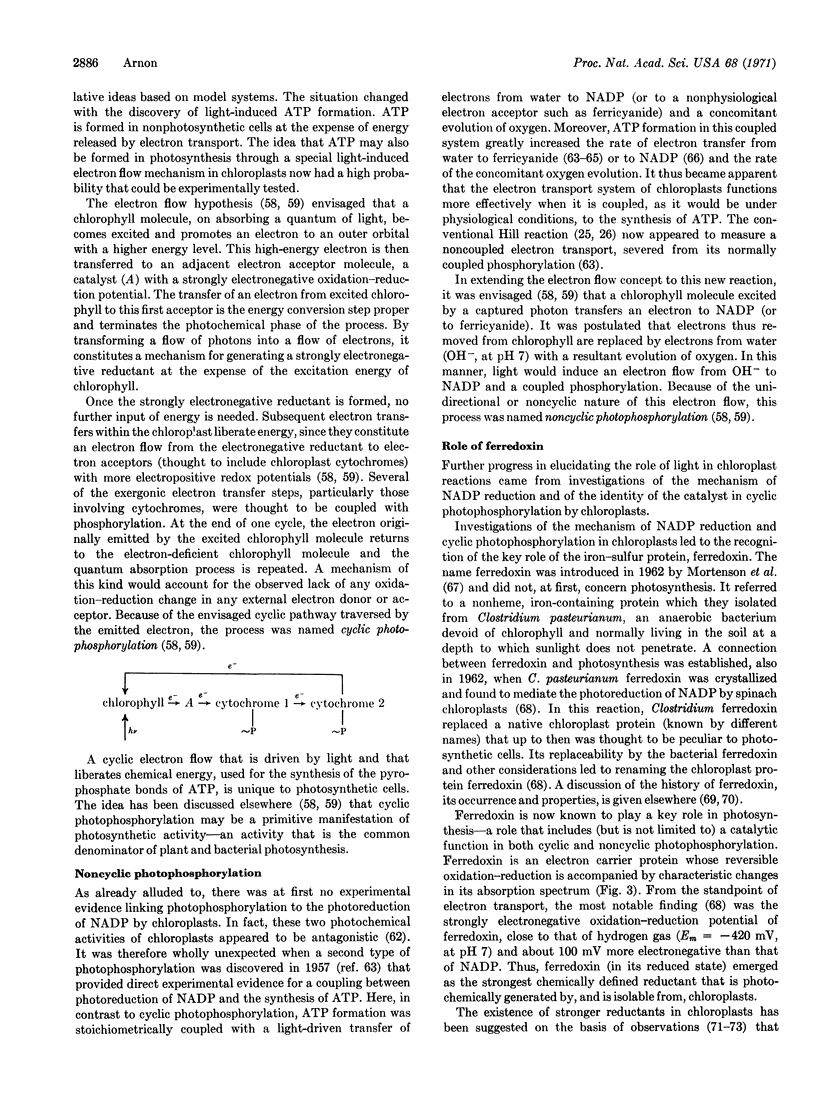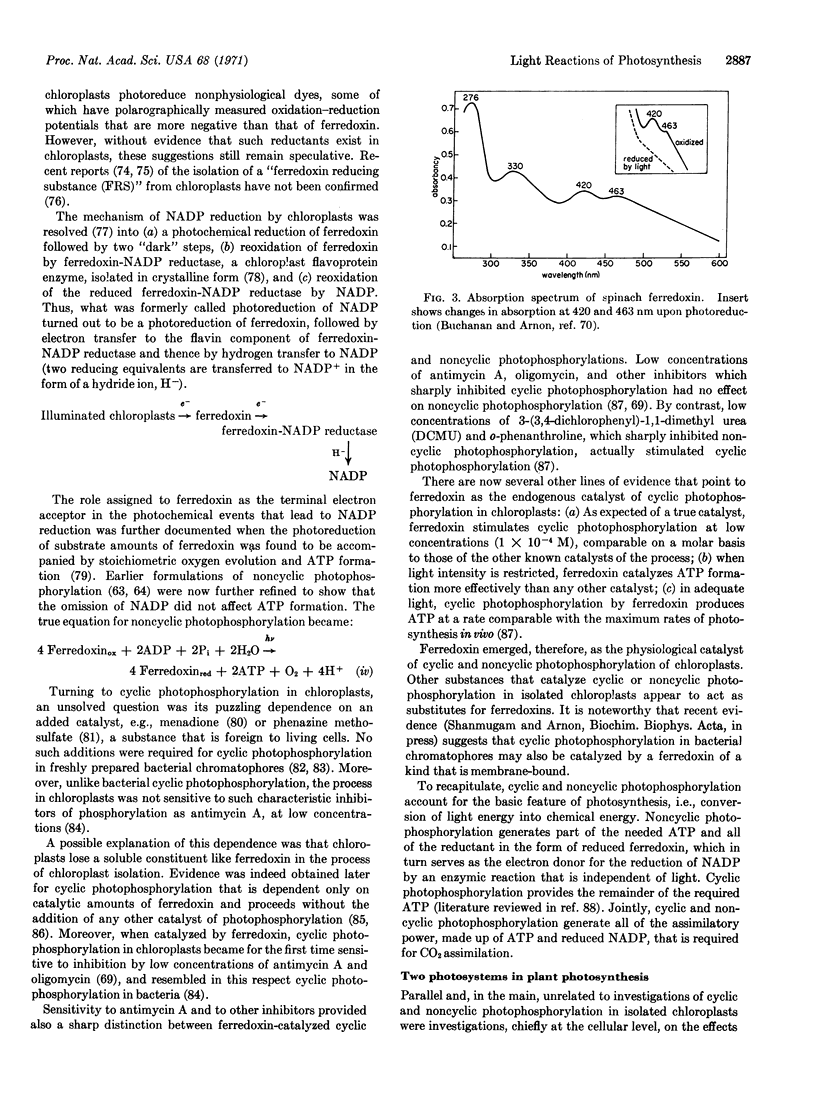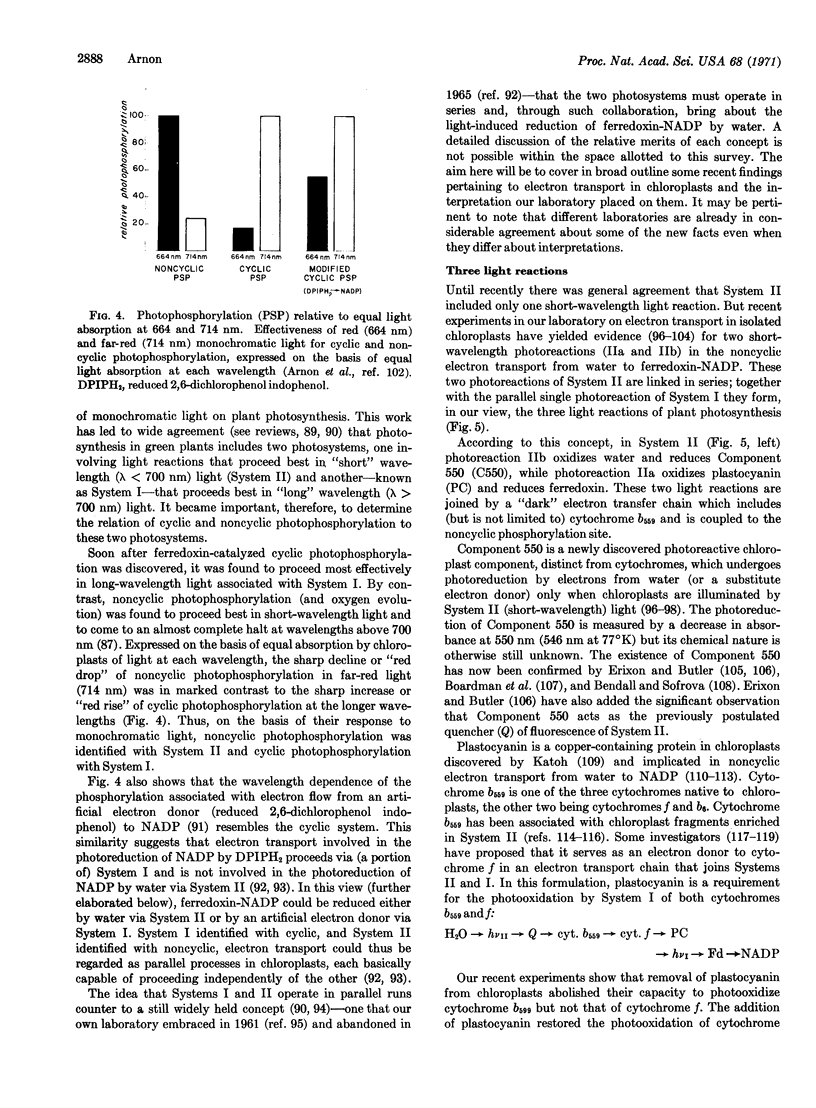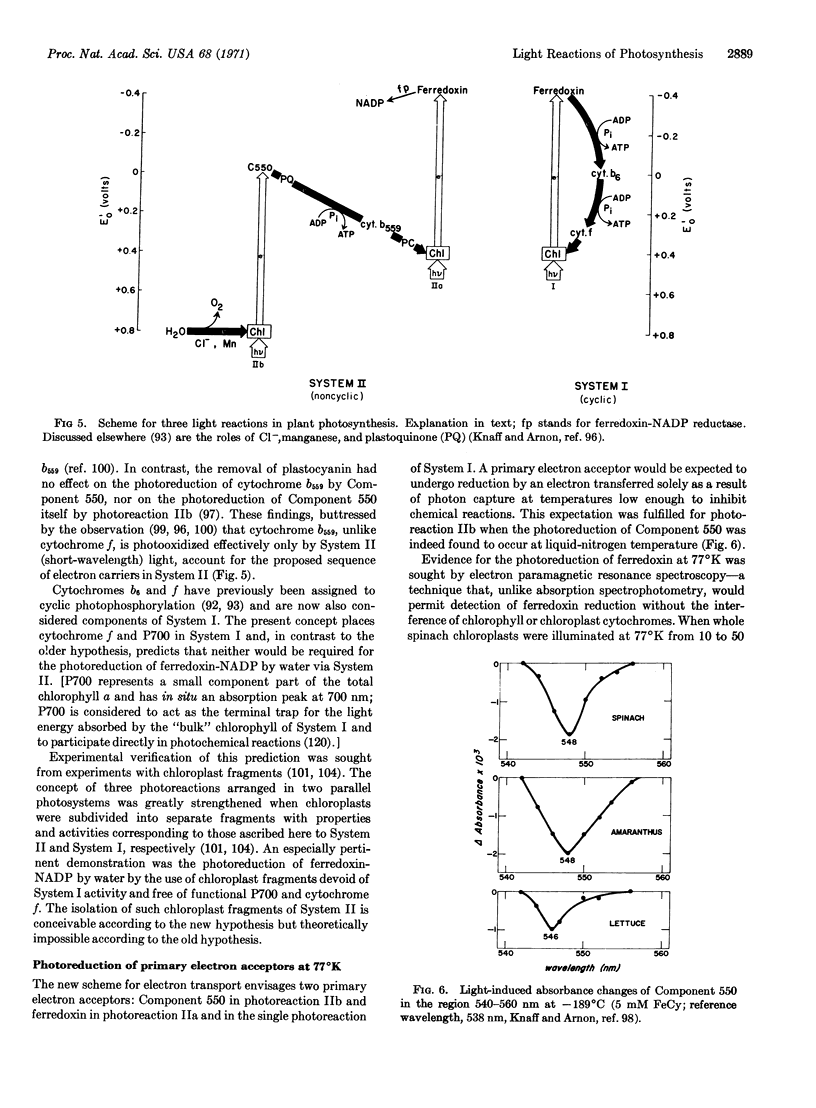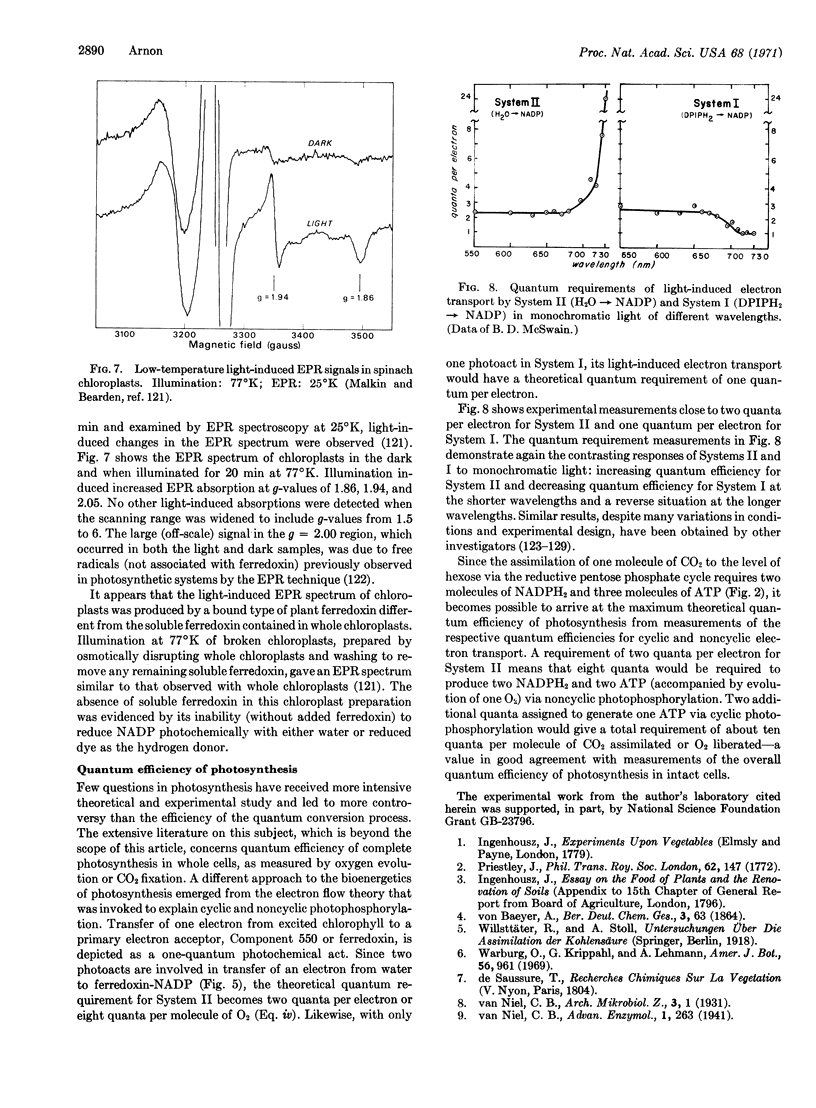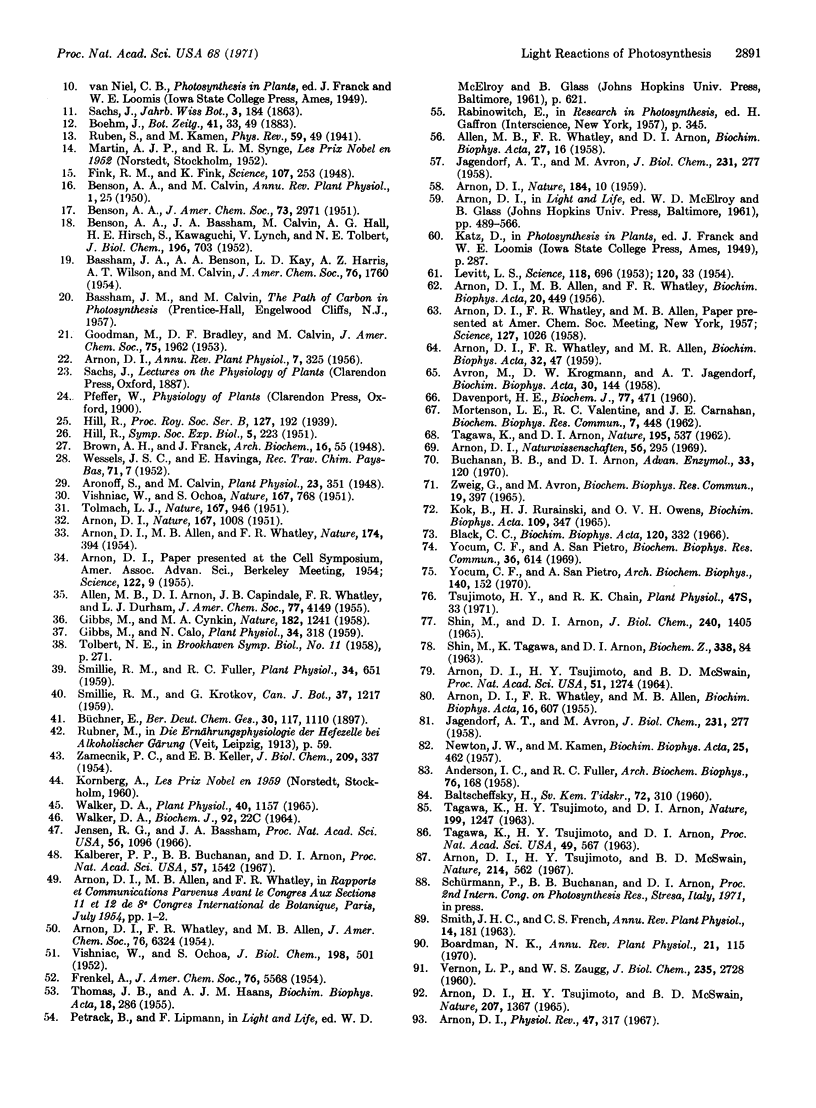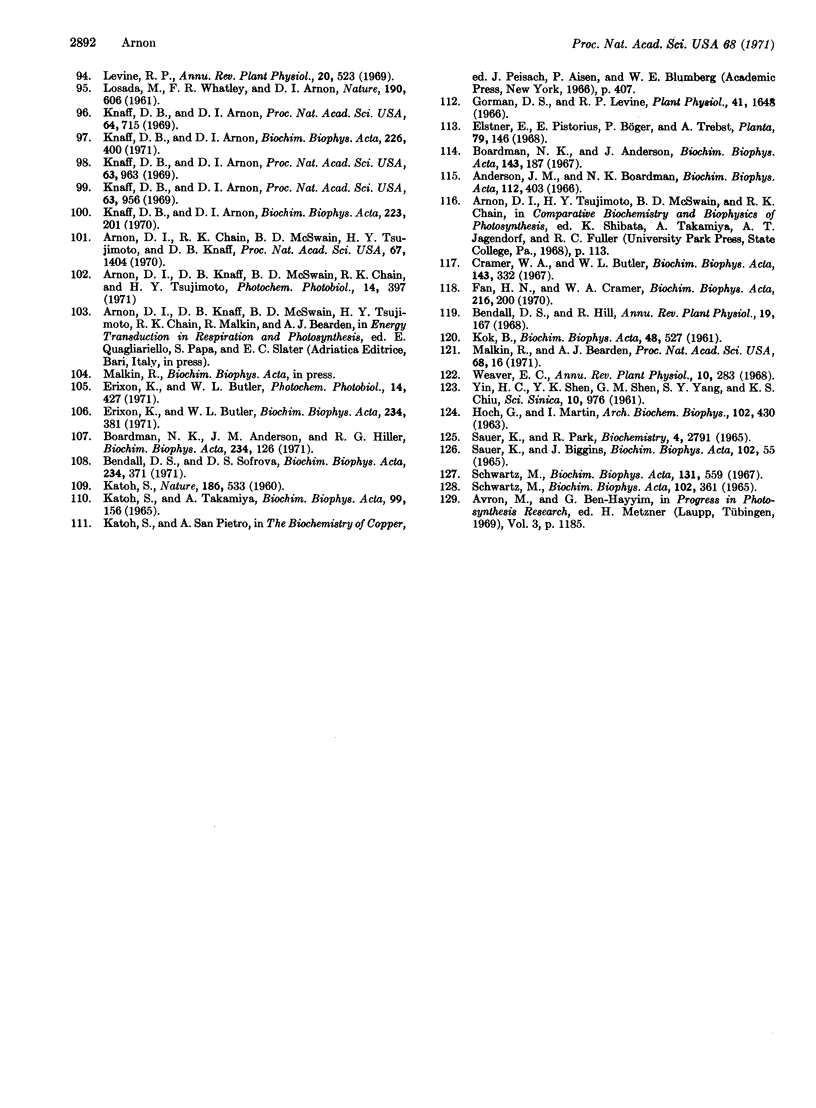Abstract
Historically, the role of light in photosynthesis has been ascribed either to a photolysis of carbon dioxide or to a photolysis of water and a resultant rearrangement of constituent atoms into molecules of oxygen and glucose (or formaldehyde). The discovery of photophosphorylation demonstrated that photosynthesis includes a light-induced phosphorus metabolism that precedes, and is independent from, a photolysis of water or CO2. ATP formation could best be accounted for not by a photolytic disruption of the covalent bonds in CO2 or water but by the operation of a light-induced electron flow that results in a release of free energy which is trapped in the pyrophosphate bonds of ATP.
Photophosphorylation is now divided into (a) a non-cyclic type, in which the formation of ATP is coupled with a light-induced electron transport from water to ferredoxin and a concomitant evolution of oxygen and (b) a cyclic type which yields only ATP and produces no net change in the oxidation-reduction state of any electron donor or acceptor. Reduced ferredoxin formed in (a) serves as an electron donor for the reduction of NADP by an enzymic reaction that is independent of light. ATP, from both cyclic and noncyclic photophosphorylation, and reduced NADP jointly constitute the assimilatory power for the conversion of CO2 to carbohydrates (3 moles of ATP and 2 moles of reduced NADP are required per mole of CO2).
Investigations, mainly with whole cells, have shown that photosynthesis in green plants involves two photosystems, one (System II) that best uses light of “short” wavelength (λ < 685 nm) and another (System I) that best uses light of “long” wavelength (λ > 685 nm). Cyclic photophosphorylation in chloroplasts involves a System I photoreaction. Noncyclic photophosphorylation is widely held to involve a collaboration of two photoreactions: a short-wavelength photoreaction belonging to System II and a long-wavelength photoreaction belonging to System I. Recent findings, however, indicate that noncyclic photophosphorylation may include two short-wavelength, System II, photoreactions that operate in series and are joined by a “dark” electron-transport chain to which is coupled a phosphorylation site.
Full text
PDF